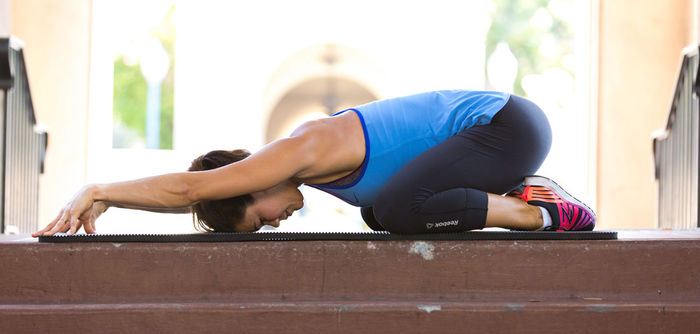High-intensity interval training (HIIT), defined as alternating periods of high-intensity exercise (85% or higher of maximum heart rate) followed by rest intervals, continues to be one of the most popular exercise trends worldwide. It is important to note that rest intervals do not necessarily mean resting or inactivity, but can include periods of less-intense exercise (e.g., low-intensity resistance sets) and active recovery (e.g., dynamic stretching).
The key to safe and effective HIIT programming is to acknowledge that each person has different baseline fitness. What is defined as high intensity for one person may be either too intense or not challenging enough for someone else. The key is to determine how high intensity is defined for each individual, and then modify your training methods and exercise intensity for each client or participant.
To achieve the goal of HIIT modification, start with a review of the three key programming variables associated with HIIT:
- Intensity (how hard)
- Volume (how much or how long)
- Rest periods
A couple things to keep in mind:
- Intensity and volume are inversely related. The higher the intensity of the exercise, the shorter the all-out work or high-intensity interval will be.
- The higher the intensity of the exercise, the longer the rest period will be.
To modify HIIT, use training methods that keep clients active and heart rate up, and focus on specific muscle groups at one time instead of focusing solely on the intensity or effort of exercise.
Supersetting
Supersets involve doing two exercises back to back. They are a great way to keep people moving while focusing on specific muscles. Typically, the muscle groups used complement one another—either working together (e.g., synergist supersets like a back exercise followed by a biceps exercise) or agonist-antagonist supersets (e.g., a triceps exercise followed by a biceps exercise).
Another way to do supersets is to alternate cardiovascular exercise with resistance exercises. For example, you could have your client walk on an incline on a treadmill for one minute and then perform a set of 15 lunges for each leg. The superset can be repeated multiple times to increase volume, or the time on the treadmill can be changed along with the number of repetitions performed each set. The intensity can be controlled by manipulating the incline on the treadmill and the amount of weight used (or not used) during lunges.
Circuits
Circuits are a series of exercises performed in succession, and are a great way to keep people moving and change up the volume and intensity during workouts. For example, you could have a client perform a dumbbell squat followed by a modified Romanian deadlift followed by a standing overhead press. To complete the circuit, have the client perform three to four sets of 12-15 repetitions of each exercise. To increase the intensity, increase the weight used during each set and/or decrease the length of the rest intervals.
Combined Training
Combined training, which is simply doing cardiovascular and resistance training within the same session, is arguably the most effective training method for weight loss. However, be advised that strength gains are compromised when cardiovascular and strength training are performed in the same session (Doma and Deakin 2013). For that reason, this training method is recommended for beginning-to-intermediate clients with the primary goals of general fitness and/or weight management.
With combined training, cardiovascular and strength exercises are not performed as supersets or circuits as described above, but in succession. For example, you could have your client do 20 minutes of jog-walk intervals on the treadmill followed by 20 minutes of total-body strength training.
Complex Training
Complex training is an advanced form of strength and conditioning that pairs two biomechanically similar lifts. What differentiates complex training from other training methods is that one exercise is a moderate-to-heavy weight conditioning lift (moderate-to-high intensity), while the other exercise is a plyometric drill. An example of a complex training set is pairing a back squat (conditioning lift) with a biomechanically similar tuck jump (plyometric drill). Because complex training is advanced and uses plyometric drills, it should be reserved for intermediate- to advanced=level fitness clients and athletes.
HIIT is a time-efficient way to train to improve fitness and manage weight. However, high-intensity exercise needs to be approached with caution by taking individual fitness levels into account. Using modifications and varying training methods can help make this form of training safe and effective for your clients and participants.
References
Doma, K., and Deakin, G. (2013). The cumulative effects of strength and endurance training sessions on muscle force generation capacity over four days. Journal of Australian Strength and Conditioning, 21, 1, 34-38.
Learn more about HIIT workouts for diverse populations with our best-selling webinar: Busy Days Call for HIIT.




 by
by 










 by
by